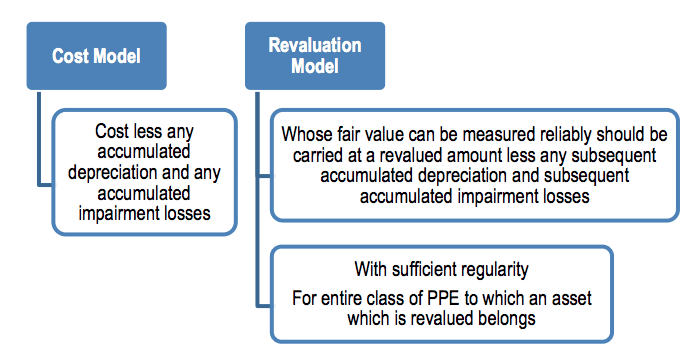
By categorizing financial transactions into these accounts, businesses can effectively monitor and analyze their financial performance. It allows them to make informed decisions, identify trends, and evaluate the impact of various financial activities on the overall financial position of the company. Owner’s equity is the portion of the business’s assets that you or your shareholders https://www.adprun.net/ own. When your business records revenue from sales, this will increase owner’s equity because it means that the company has earned more money. On the other hand, if the company incurs expenses, this will decrease the owner’s equity because it means there’s less money available for you to draw out. The reported balance in these accounts is carried over to the next period.
- Once your journal is completed, you’ll transfer this information to the general ledger.
- The latter is less common and suited to smaller, simpler businesses without many monthly transactions.
- The ledger is a book in which all accounts relating to a business enterprise are kept.
- The record of trading transactions is kept on the folios or pages of these account books, called ledgers.
Cash Flow Statement
The next step in the general ledger and financial reporting cycle is to prepare an unadjusted trial balance. The double-entry accounting method requires every transaction to have at least one debit (incoming money) and one credit (outgoing money) entry, which must always balance out. It is important to note, however, that the number of debit and credit entries does not have to be equal, as long as the trial balance is even. General ledgers, also referred to as accounting ledgers, are the physical or digital record of a company’s finances. A general ledger or accounting ledger is a record or document that contains account summaries for accounts used by a company.

Accounting 101 for Small Businesses
The difference between these inflows and outflows is the company’s net income for the reporting period. If at any time the sum of debits for all accounts does not equal the sum of credits, the equation will not balance, and you’ll know https://www.online-accounting.net/bookkeeping-blog-bookkeeping-blog-remote-and/ you’ve made a mistake. A debit increases asset and expense accounts and decreases liability, revenue, and equity accounts. Alternatively, credits increase liability, revenue, and equity accounts and reduce asset and expense accounts.
Benefit from a solution that streamlines your accounting system
For example, 1000-series numbers might only apply to asset accounts, while 2000-series numbers apply to liabilities, 3000-series numbers apply to equity accounts, and so forth. It is considered a best practice to leave some gaps between assigned general ledger account numbers, to leave room for the subsequent insertion of additional accounts. Even when using codes, your records should still include a description of each transaction. Then, even if you pass your books on to an accountant or bookkeeper, the descriptions will help them track what’s what. There are many ways to separate the general ledger into groups of accounts with common characteristics, these are more fully discussed in our subsidiary ledgers in accounting post. For a small business the most common way to split the ledger is into four subledgers.
List of General Ledger Accounts and Content
To elaborate on the third point above, this difference so placed is the balance of the account. However, computerization can only speed up the arithmetical aspects of accounting; they cannot replace an understanding of the concepts. However, even before the widespread use of computers, mechanized systems based on mechanical accounting machines were used by many larger companies.
Ledger Accounts

It will help a company resolve discrepancies, prevent fraud, and avoid issues with regulatory and tax compliance. To get started, create a journal and record each business transaction as it occurs. Once your journal is completed, you’ll transfer this information to the general ledger.
This gives you the chance to reconcile these errors before closing your books at the end of an accounting period. To reconcile your GL at the end of each fiscal period, you must generate a trial balance by totaling all of the debit and credit accounts and then checking to verify that the debits are equal to the credits. If these are not equal, then the accountant will check for errors in the journals and accounts. The postings to the control accounts are from the summary totals in the books of prime entry. The postings to the subledgers are from the individual detailed entries in the books of prime entry. Since both sets of entries derive from the same source the use of a control account allows the carrying out of a GL reconciliation.
Furthermore, you identify errors or misstatements and take the requisite actions to make good the errors. Therefore, your or your accountants go through each of the accounts individually if you prepare Journal and Ledger manually. Furthermore, examples of fixed costs the assets are categorized into current assets and fixed assets. These are typically reported on the left-hand side of your company’s balance sheet. Furthermore, at the end of the accounting period, you close these Ledger Accounts.
A general ledger account is an account or record used to sort, store and summarize a company’s transactions. These accounts are arranged in the general ledger (and in the chart of accounts) with the balance sheet accounts appearing first followed by the income statement accounts. The general ledger (GL) is the main ledger and contains all the accounts a business uses in its double entry bookkeeping system.

At Finance Strategists, we partner with financial experts to ensure the accuracy of our financial content. It is worthwhile for transactions of a similar nature to be sorted out and accumulated in one place. Additionally, if an amount is paid to United Traders (thereby reducing the liability to United Traders), an entry is made on the debit side of the United Traders Account. If more goods are bought from United Traders (thereby incurring an additional liability to United Traders), an entry is made on the credit side of the United Traders Account. The process of transferring information from the general journal to the general ledger, for the purpose of summarizing, is known as posting.
Having an accurate record of all transactions that have taken place within a single point in time will ensure your financial reporting is done correctly. It is organized in such a way that you can quickly view, and verify information. A general journal records every business transaction in chronological order—it is the first point of entry into the company’s accounts. The general ledger is the second entry point to record a transaction after it enters the accounting system through the general journal.
Today, more than half of small businesses (53%) use an accounting software solution to handle their company’s financial data. That means they don’t need subsidiary ledger accounts because they use accounting software to record all transactions and prepare financial reports. This system acts as a master document detailing the business’s transactions over some time. These transactions are organized by accounts together with their dates, descriptions, and account balances—enough information to give you a bird’s-eye view of your business’s financial health.
Ledgers summarize the balances of the accounts in the chart of accounts. Equity is the difference between the value of the assets and the liabilities of the business. If the business has more liabilities than assets, it can have negative equity. Equity can include things like common stock, stock options, or stocks, depending on if the company is privately or publicly owned by owners and/or shareholders. Instead, financially-minded individuals — and businesses — use ledgers to fastidiously document money that’s they’re paying out, or being paid.

 НОВОСТИ
НОВОСТИ Half-Life
Half-Life Half-Life 2
Half-Life 2








